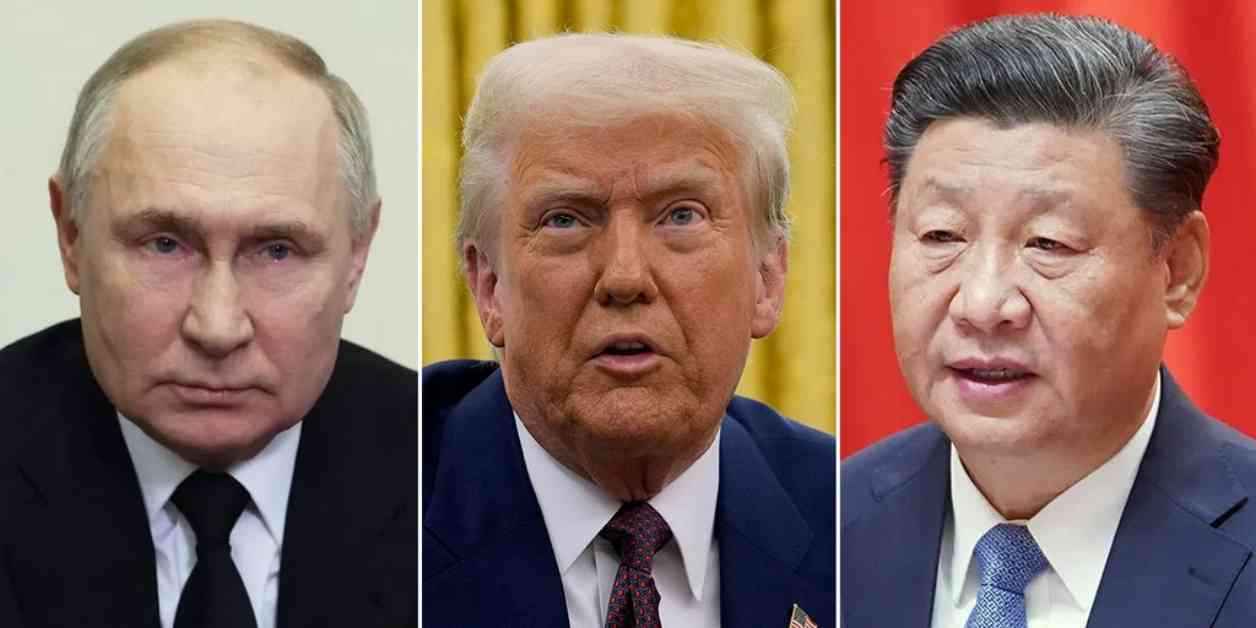President Trump has proposed disarmament talks with China and Russia, aiming to address global denuclearization. In a recent statement, Trump expressed his desire to convene a joint meeting with Chinese President Xi Jinping and Russian President Vladimir Putin to discuss reducing nuclear weapons. This initiative comes as the U.S., Russia, and Ukraine are actively engaged in negotiations to resolve conflicts in the region.
During a press briefing, Trump emphasized the need to move away from the proliferation of nuclear weapons. He highlighted the exorbitant costs associated with developing new weaponry, emphasizing that the world already possesses a surplus of nuclear armaments capable of catastrophic destruction. The President underscored the importance of redirecting resources to more productive endeavors as opposed to military expenditures.
According to Trump, the U.S. is projected to allocate approximately $756 billion towards nuclear weapons between 2023 and 2032. This significant financial commitment raises questions about the necessity of expanding nuclear capabilities, especially in light of existing arsenals that could decimate the globe multiple times over. The economic implications of diverting funds to nuclear programs instead of other vital sectors remain a focal point of Trump’s disarmament proposal.
Trump’s Vision for Denuclearization Talks
In outlining his plan for disarmament discussions, Trump revealed his intention to schedule meetings with Xi and Putin early in his second term. He proposed a drastic reduction in military budgets, suggesting that both countries slash their defense expenditures by half. Trump expressed confidence in the feasibility of achieving this objective, indicating a willingness to engage in dialogue to advance the disarmament agenda.
Historically, the U.S. has significantly downsized its nuclear arsenal since the collapse of the Berlin Wall in 1989. Current statistics indicate that the U.S. maintains 3,748 nuclear warheads, a notable decrease from the inventory of 22,217 warheads in 1989. This downward trend underscores the U.S.’s commitment to reducing nuclear stockpiles over the years, aligning with the broader goal of promoting global disarmament.
Comparatively, Russia possesses an estimated stockpile of 4,380 nuclear warheads, while China boasts an arsenal of around 600 warheads, as reported by the Federation of American Scientists. These figures shed light on the varying levels of nuclear capabilities among major world powers, underscoring the importance of coordinated efforts to curtail proliferation and enhance international security.
Challenges and Opportunities for Diplomacy
Trump’s recent overtures towards Xi and Putin build upon his earlier remarks at the Davos World Economic Forum, where he expressed a keen interest in nuclear talks with Russia and China. Previous negotiations between the U.S., Russia, and China faced setbacks during Trump’s initial term, as disagreements over treaty extensions and limits on nuclear arsenals impeded progress.
Despite these challenges, Trump remains optimistic about the prospects for advancing disarmament discussions. His insistence on reducing military spending and promoting peace underscores a commitment to fostering stability and cooperation on the global stage. By engaging in dialogue with key international leaders, Trump seeks to address pressing security concerns while fostering diplomatic relationships that can pave the way for sustainable disarmament agreements.
Moreover, Trump’s engagement with Putin and Xi reflects a broader strategy to address ongoing conflicts, such as the crisis in Ukraine. By advocating for peace and sanctions against aggressors, Trump aims to leverage diplomatic channels to de-escalate tensions and prevent further violence. His proactive stance on international affairs highlights the interconnected nature of global security and the imperative of collaborative efforts to mitigate threats and promote peace.
In conclusion, President Trump’s proposal for disarmament talks with China and Russia signifies a pivotal moment in global diplomacy. By prioritizing denuclearization and advocating for reduced military expenditures, Trump underscores the importance of dialogue, cooperation, and peace in addressing security challenges. Through sustained engagement with key stakeholders, Trump aims to lay the groundwork for a more secure, stable, and harmonious world.


